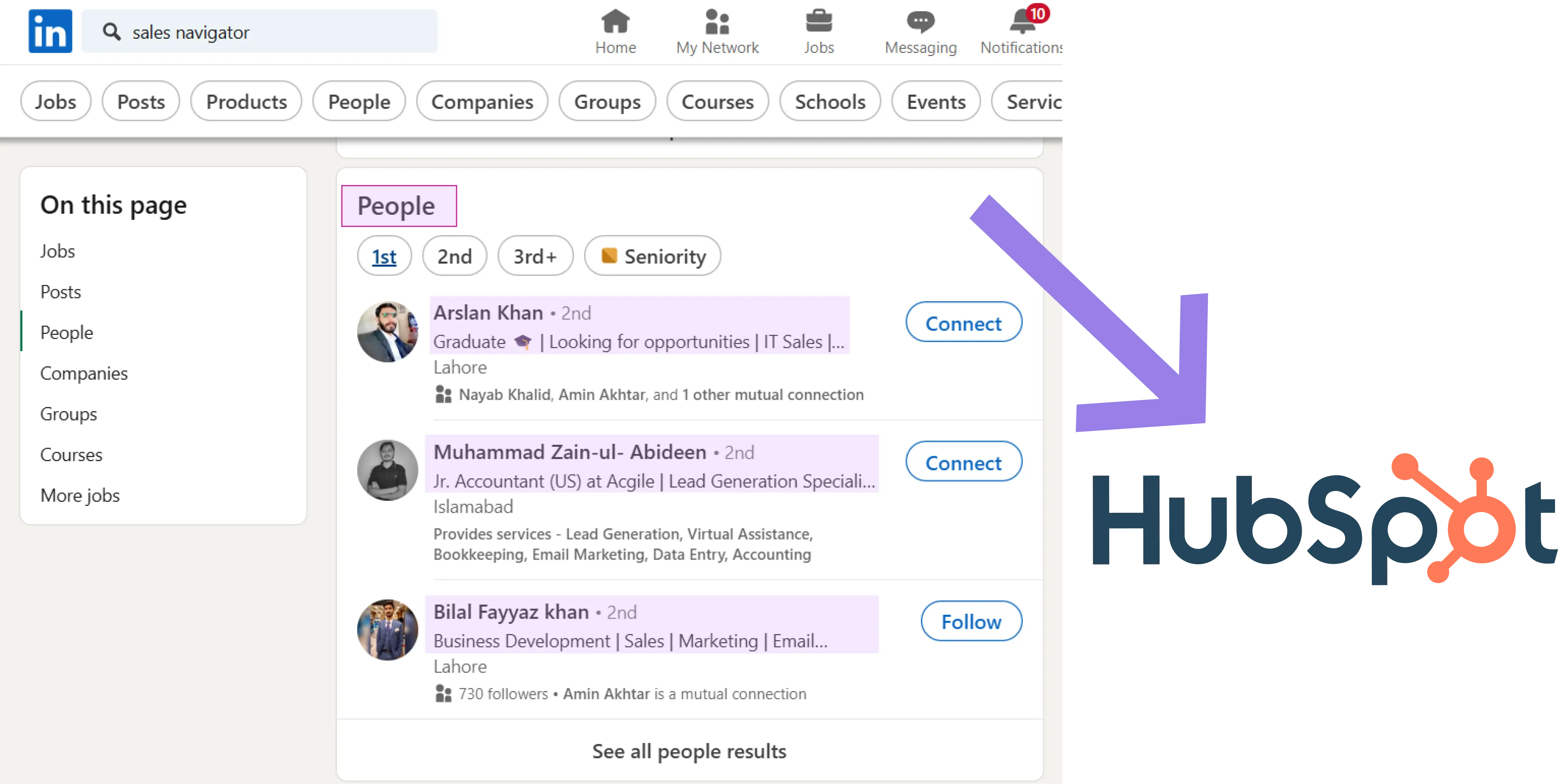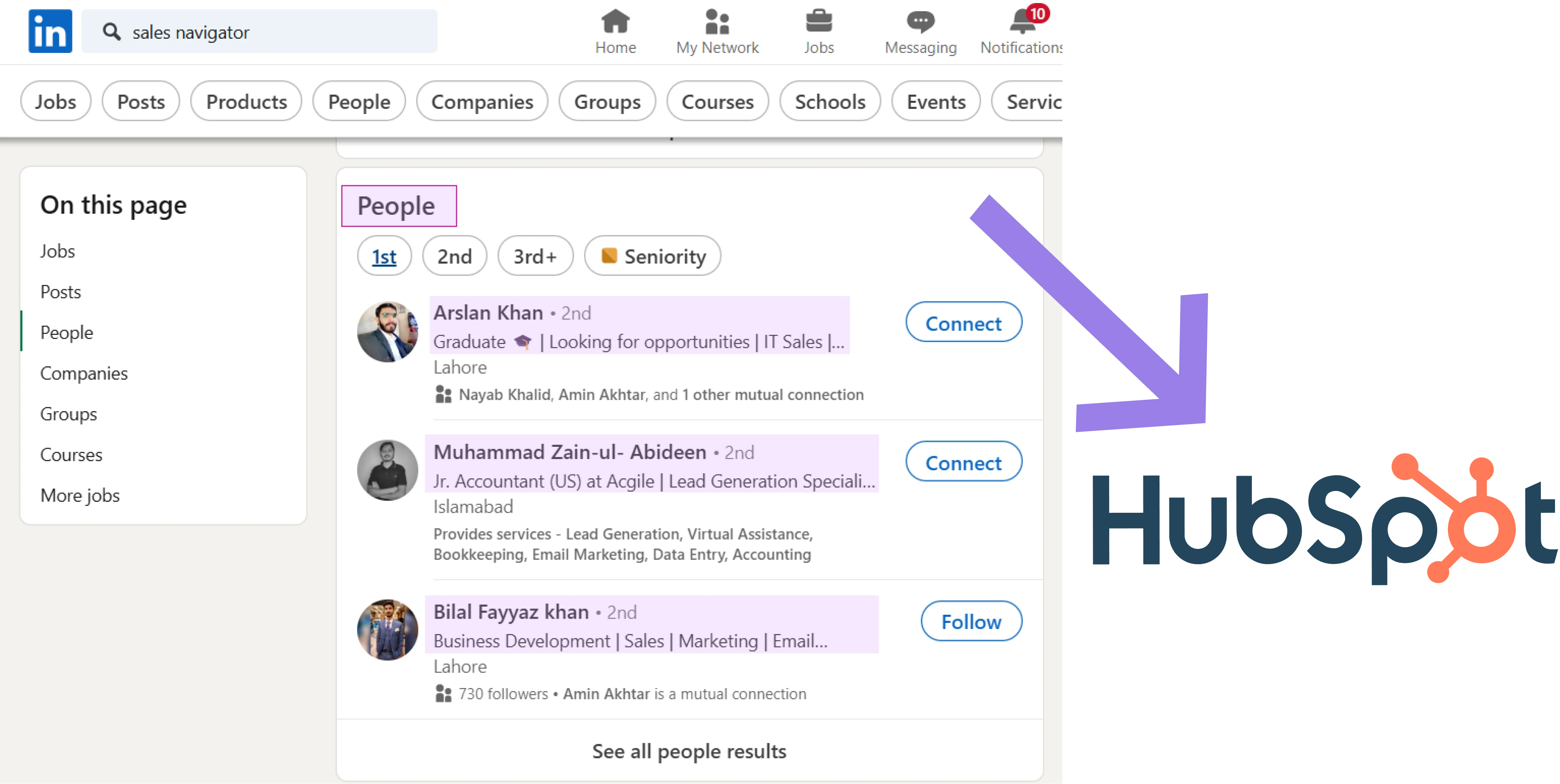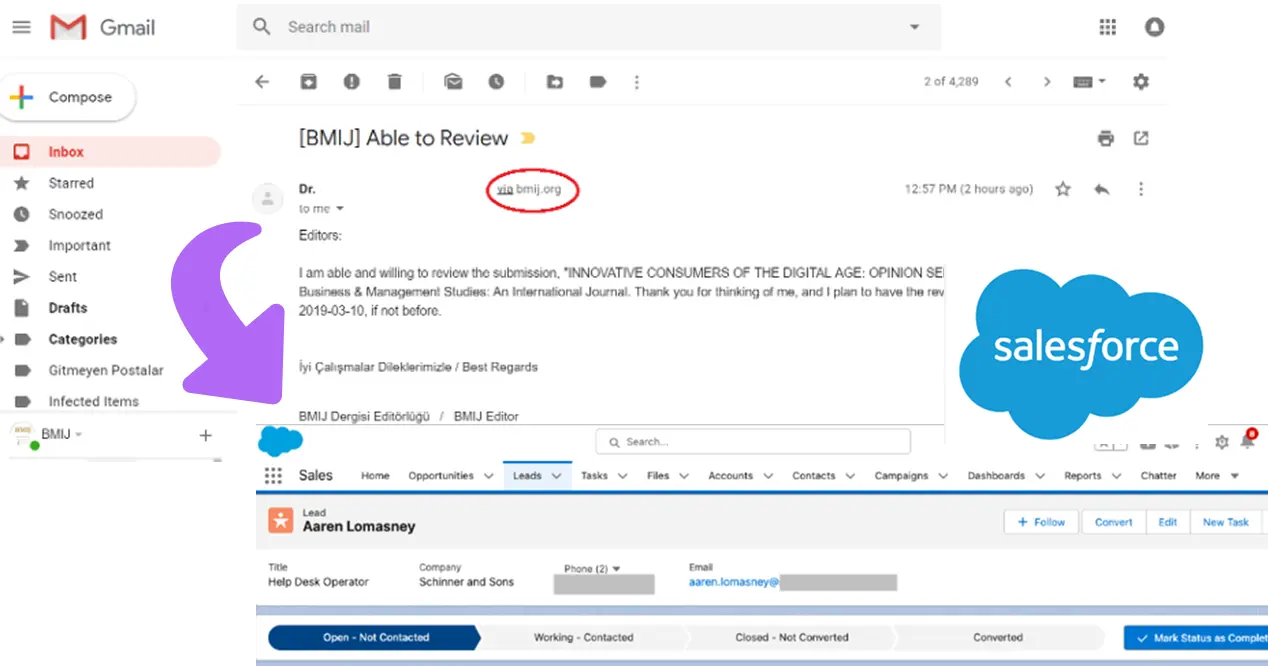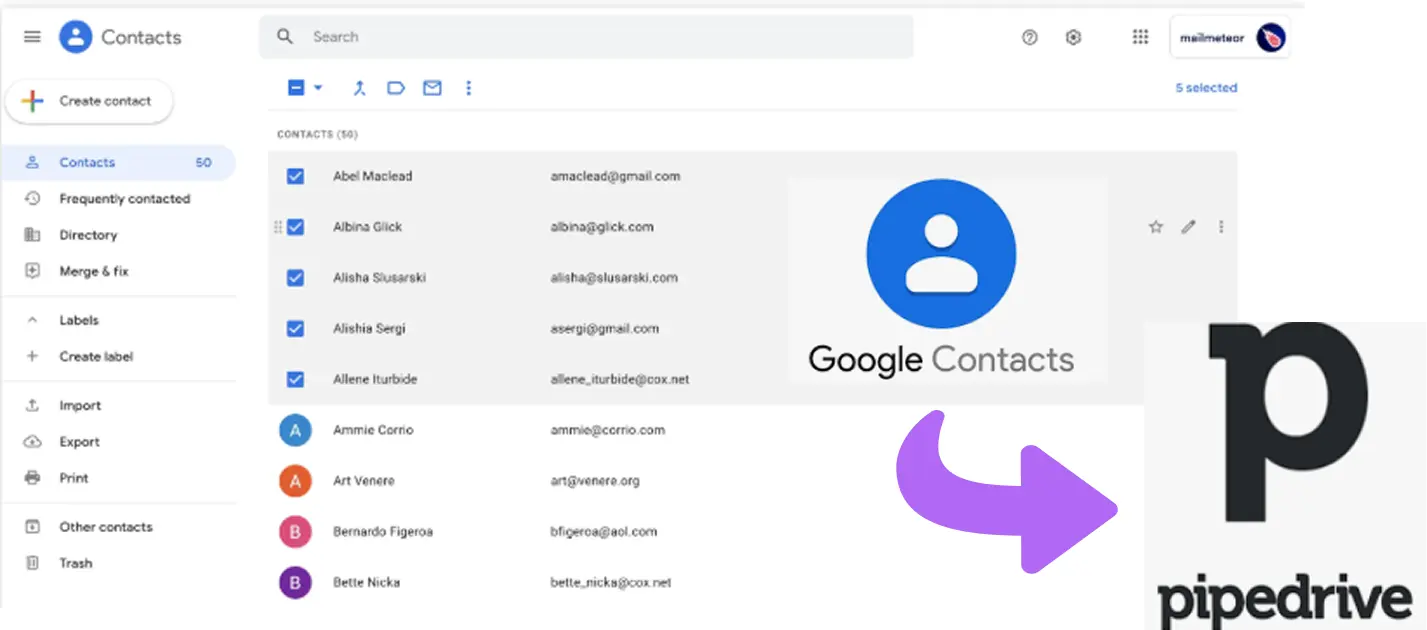Lead generation automation saves time and increases lead volume.
By the way, we're Bardeen, we build a free AI Agent for doing repetitive tasks.
If you're tired of manual lead generation, check out our AI tools for sales. Automate prospecting and email outreach to focus on closing deals.
Tired of manually generating leads for your business? Lead generation automation could be the solution you've been searching for. By automating repetitive tasks like data entry and email outreach, businesses can save time and resources while increasing their lead volume. In fact, companies that automate lead management see a 10% or more bump in revenue in 6-9 months.
In this complete guide, we'll dive into the nuts and bolts of lead generation automation. You'll learn what it is, how it works, and the key tools and strategies for success. Plus, we'll explore how AI-powered automation tools like Bardeen are revolutionizing the lead gen game.
What is lead generation automation?

Sales teams have been engaged in lead generation for decades. But the game is changing. In 2025, tech is playing a bigger and bigger role in generating high-quality leads. That’s where lead generation automation and AI for lead generation come in.
Definition of lead generation automation
Lead gen automation combines technology and sales or marketing tactics to generate leads online with minimal human involvement. By setting up an automated lead gen system, businesses can identify, reach out to, and convert potential customers more efficiently than through manual processes.
For example, an e-commerce business could set up an automated email campaign that sends personalized product recommendations to website visitors based on their browsing history. This helps nurture leads and guide them towards making a purchase.
Key components of an automated lead gen system
An effective automated lead generation system typically includes:
- Email marketing automation
- Website analytics and tracking
- Content marketing
- Social media marketing
- Advertising
These components work together to attract leads, collect their information, and nurture them until they are ready to make a purchase. For instance, a business could use website tracking to identify which pages a lead visits, then trigger targeted email campaigns based on their interests.
How lead generation automation works
Automated lead gen systems do everything (and more) a whole sales team used to do to generate leads. First, they use automated workflows, forms and chatbots to collect user data. Then, the system manages this lead data and can score them based on the likelihood of buying, using lead scoring software features.
But it doesn’t end there. Lead automation also plays a key role in nurturing and converting leads, too. For example, sales teams can send personalized emails and target particular leads with ads in order to guide them through the sales funnel. The system can then automatically book calls and demos with the leads who make it through.
What are the benefits of automated lead generation for your business?
Some of the benefits of automated lead generation may already be clear. Let’s take a look at some of the main advantages in detail:
Increased efficiency and time savings
It goes without saying that lead generation automation tools can significantly slash the time your sales team has to spend manually entering data. This leaves your reps more time to spend connecting with high-value leads later down the line.
Automated systems are also much less prone to error. While no system is perfect, you can rely on many lead gen automation systems for fast and efficient workflows.
Improved lead quality and conversion rates
With their ability to target leads based on their user data and incredible personalization capabilities, automated lead gen systems generally attract higher-quality leads.
Not only do they attract them, but they also nurture them more effectively with targeted content and instant replies. Combined, these can massively increase your conversion rates.
Scalability and cost reduction
Think about it: automation saves many hours of painstaking manual labor. And with time savings come cost savings. In fact, some studies suggest automation can cut costs by around 10-15%. And it’s endlessly scalable, too. One system can support you as you grow at virtually no extra cost!
Essential tools for lead generation automation
Automating your lead generation process requires a suite of tools that work together across the entire sales funnel. The right combination of lead generation software can save you time, improve lead quality, and ultimately boost your bottom line.
When evaluating lead generation automation tools, look for features like customizable forms, advanced segmentation, and integrations with your existing tech stack. It's also important to consider the specific needs of your business and target audience.
Types of lead generation automation tools

As we mentioned earlier, there are many areas in which automation can help. And that’s why there are many categories of tools used for automating lead generation. Let’s take a look:
Email marketing automation tools
Top-of-the-range email marketing tools in 2025 offer a huge suite of automation features. Most perform segmentation, personalization, A/B testing, analytics, and more at the click of a button.
Here are some top performers:
- ActiveCampaign scores 4.5 on G2 and 4.6 on Capterra. Prices start from $15 per month.
- HubSpot Marketing Hub scores 4.4 on G2 and 4.5 on Capterra. The cheapest plan is $15 per month.
- Mailchimp scores 4.4 on G2 and 4.5 on Capterra. Users can test the platform 14 days for free, then move on to the cheapest plan at $20 per month.
As you can see, all three of these competitors have over four stars on G2, with ActiveCampaign just clinching it at 4.5 stars. Users consistently say the platform is easy to use and that the automations are simple to get the hang of.
CRM and lead scoring software
So what about managing and scoring leads? For that, you’re going to want a top CRM platform and/or lead scoring software, such as Salesforce, HubSpot, or Zoho CRM. These systems make sorting leads a breeze—just make sure they have the integration and scaling capabilities you need.
Salesforce is a long-time dominator in the CRM industry, so it should be no surprise it tops the list here. On G2, it has an impressive 4.5 stars. How much you pay depends on the service you sign up for (and Salesforce offers a lot of services), but you can explore them on their website.
Others worth considering are:
- HubSpot CRM scores 4.4 on G2 and 4.5 on Capterra. And it’s free!
- Zoho CRM scores 4.1 on G2 and 4.3 on Capterra. Prices start from $14 per month.
Chatbot and AI for lead qualification
Getting leads is one thing; qualifying them is another. That’s where AI chatbots and AI for lead qualification come to the rescue. Such systems take the hassle out of manual processes and leave you more time to personally connect with leads. They enhance sales processes through intelligent automation and personalized customer interactions.
The highest-rated platforms in this area are:
- Bardeen scores 4.8 on G2 and 4.5 on Capterra. Prices start from $30 per month when paid annually.
- Drift scores 4.4 on G2 and 4.5 on Capterra. You’ll have to contact their sales team for pricing information.
- Intercom scores 4.5 on G2 and 4.5 on Capterra. Prices start from $29 per month when paid annually.
All three of these services offer extensive AI lead qualification features, but there’s a clear frontrunner: Bardeen. With 4.8 stars on G2, it’s the highest-rated platform we’ve mentioned so far. Why? Customers praise everything from its user-friendly interface and data scraping capabilities to its native integrations and time-saving features.
Bardeen even has a free plan with pro features — so give it a try!
Key features of lead gen automation software

When choosing lead generation automation software, look for these essential features:
- Customizable lead capture forms
- Advanced segmentation and targeting
- Automated lead scoring and routing
- Email marketing automation
- Analytics and reporting
- Integrations with CRM and other tools
These features allow you to tailor your lead generation efforts to your specific audience and goals. For instance, advanced segmentation lets you target leads based on behavior, demographics, or other criteria, while automated lead scoring prioritizes the most promising prospects.
Top lead generation automation tools

There are plenty of excellent lead generation automation tools on the market. We’ve compiled a short list with some highly rated software to help you decide which direction to take.
Marketo
Marketo (part of Adobe) is a comprehensive marketing automation solution covering a wide range of automation bases (including email campaigns and nurturing). It currently has 4.1 stars on G2, with customers enjoying its easy-to-use features but stalling a little at the price.
What is that price? Well, the prices aren’t available on the Marketo website without signing up, but it’s believed to be around $895 per month for ‘basic’ and up to $3,175 per month at the highest level.
Pardot
Okay, the full name of Pardot is ‘Salesforce Pardot’ - that gives you some idea of who owns it. And with one of the biggest names in CRM behind it, it’s no wonder it’s so popular. Essentially, Pardot is a B2B marketing automation software that helps users identify and engage with prospects. Salesforce Marketing Cloud currently has 4.0 stars on G2.
With the big name comes a bigger price tag. A Salesforce Marketing Cloud Account will set you back anywhere between $1250 and $15,000 per month, depending on the tier.
Unbounce
Unbounce is an AI-powered landing page builder that simplifies lead-generation tactics. Marketing teams can create optimized landing pages in minutes, enhancing lead generation from various channels. Among reviewers, Unbounce stands out mainly for its creation capabilities but also for its ease of use and AI effectiveness. It has 4.4 stars on G2. Pricing ranges from $74 per month to $187 per month.
Integrating lead gen tools with CRMs
Integrating your lead generation tools with a CRM system is crucial for streamlining your sales process. A CRM allows you to track and manage all interactions with leads and customers in one centralized database.
Most lead automation tools offer native integrations with popular CRMs like Salesforce, HubSpot, or Pipedrive. These integrations allow you to automatically sync lead data, trigger personalized email campaigns, and notify sales reps when leads are qualified. Here are some automations you can try:
Connecting your lead gen tools with a CRM ensures that no leads slip through the cracks and that your sales team has the information they need to close deals effectively. Bardeen's AI and automation for sales prospecting can scale these processes.
The right combination of lead generation automation tools can transform your business, saving time and resources while delivering a steady stream of qualified leads. You can build an automated lead gen system that drives real results by evaluating your specific needs and choosing tools with essential features like customization, segmentation, and CRM integration.
How to automate lead generation: best practices
Automating your lead generation efforts can significantly boost your business growth, but following best practices to maximize your results is crucial. You can create a well-oiled lead generation machine by:
- Defining your target audience
- Optimizing your lead capture forms and landing pages
- Implementing lead scoring
- Nurturing leads through automated email campaigns
Define your target audience and buyer personas

Defining your target audience and creating buyer personas is the foundation of any successful lead generation strategy. Your efforts will be less effective without a clear understanding of who you're trying to reach.
How do you create buyer personas? Start by gathering data on your current customers and ideal prospects. Consider factors like job title, industry, company size, pain points, and goals. Use this information to create detailed profiles that represent your ideal customers.
For instance, if you sell marketing automation software, one of your buyer personas might be "Marketing Manager Mary," who works at a mid-sized B2B company, struggles with managing multiple campaigns manually, and wants to improve her team's efficiency and ROI.
Optimize lead capture forms and landing pages

Your lead capture forms and landing pages are critical components of your automated lead generation process. They need to be optimized for conversion, with clear and compelling offers that entice visitors to provide their contact information.
Keep your forms short and simple. Only ask for the most essential information (like name, email, and company name). Use A/B testing to experiment with different form lengths, layouts, and calls-to-action to find what works best for your audience.
Your landing pages should have a clear and focused message that matches the ad or link that brought the visitor there. Use strong headlines, benefit-focused copy, and eye-catching visuals to keep visitors engaged and motivated to convert. You can also automate lead management to streamline the process further.
Implement lead scoring and prioritization

Not all leads are equal. Some will be more qualified and ready to buy than others. That's where lead scoring comes in.
Lead scoring involves assigning points to leads based on their characteristics and behavior, such as job title, company size, website activity, and email engagement. The higher the score, the more qualified the lead.
By implementing lead scoring, you can prioritize your sales team's efforts and focus on the leads that are most likely to convert. You can also use lead scoring to trigger automated nurturing campaigns based on a lead's score and engagement level.
Nurture leads with automated email campaigns

Most leads aren't ready to buy right away. They need to be nurtured with relevant and valuable content over time until they're ready to make a purchase decision.
That's where automated email campaigns come in. By setting up triggers based on lead behavior (like downloading an eBook or attending a webinar), you can automatically send targeted emails that guide leads through the buyer's journey. This helps in lead enrichment, making your efforts more effective.
For example, if a lead downloads a whitepaper on lead generation best practices, you could follow up with an email series that provides additional tips and resources, and eventually invites them to a demo of your lead generation software.
By automating your lead nurturing efforts, you can save time and resources while still providing a personalized and valuable experience for your leads.
Implementing these best practices for lead generation automation takes some planning and effort, but the payoff can be significant. By attracting the right leads, engaging them with targeted content, and nurturing them until they're ready to buy, you'll be able to grow your business more efficiently and effectively.
Measuring the ROI of lead generation automation
So, you’ve implemented an automated lead gen system. Now, you need to evaluate its effectiveness.
It’s all about tracking the right metrics. By measuring key performance indicators (KPIs), you can identify what's working, what needs improvement, and how to allocate your resources for maximum impact.
Monitoring lead generation metrics has many benefits: it helps you understand the quality and quantity of leads generated, the efficiency of your lead generation channels, and the overall return on investment (ROI) of your efforts. Backed by data, you’ll be able to make informed decisions and continuously refine your strategies.
Essential metrics for measuring lead generation success

To gauge the effectiveness of your automated lead generation campaigns, track metrics such as:
- Number of leads generated
- Lead conversion rate
- Cost per lead
- Lead quality score
- Customer acquisition cost
- Customer lifetime value
These KPIs provide a comprehensive view of your lead generation performance from the top of the funnel to the bottom line. Monitor them to identify trends and seize opportunities for improvement.
Tools and methods for tracking lead generation data

To accurately measure your lead generation KPIs, leverage tools like:
- Google Analytics for website traffic and conversion tracking
- CRM systems for lead and customer data management
- Marketing automation platforms for campaign performance insights
- Lead scoring tools for assessing lead quality and readiness
These will help you centralize your data. That, in turn, will give you a holistic view of your lead generation efforts. Regularly review your metrics dashboard and share insights with your team to foster a culture of continuous improvement.
Calculating the ROI of lead generation automation

To determine the ROI of your automated lead generation initiatives, use this formula:
ROI = (Revenue generated - Cost of lead generation) / Cost of lead generation x 100
For example, if your automated lead generation campaign costs $10,000 and generates $50,000 in revenue, your ROI would be:
ROI = ($50,000 - $10,000) / $10,000 x 100 = 400%
This means that you generated four dollars in return for every dollar invested in your automated lead generation efforts. Regularly calculating your ROI helps you justify your investments and identify areas for optimization.
Strategies for optimizing automated lead generation over time

To continuously improve your automated lead generation results, implement strategies such as:
- A/B testing landing pages and forms for higher conversion rates
- Segmenting your audience for more targeted messaging
- Personalizing content and offers based on lead behavior and preferences
- Optimizing your lead scoring model for better lead prioritization
- Streamlining your lead nurturing workflows for faster conversion
You can automate lead generation and drive sustainable growth over time by iteratively testing, refining, and optimizing your automated lead generation tactics.
For instance, you can use Bardeen's AI tools to automate sales prospecting and enhance your lead generation strategies with minimal effort.
Measuring the success of your automated lead generation efforts is essential for proving their value, identifying areas for improvement, and optimizing your strategies for maximum impact. You can achieve a higher ROI and drive long-term business growth by tracking the right KPIs, leveraging data-driven insights, and continuously refining your approach.
Our conclusion about lead generation automation
Any forward-thinking business needs to understand lead generation automation. That’s because automation tools will help you attract the right leads and convert them into lifelong customers.
In this comprehensive guide, we covered:
- The basics of automating lead generation
- Essential tools for lead generation automation—including their key features and top options to check out
- Best practices for automating your lead generation
- Measuring the success of your automated lead generation efforts by tracking key metrics and using data analysis tools
This guide is the first step on your path toward using automation tools for business growth. You should pick the right solution to maximize your lead generation automation, and we recommend choosing Bardeen.
You can automate the end-to-end lead generation cycle with Bardeen to save time and focus on high-value tasks. Don't miss out on the opportunity to automate your way to a steady stream of qualified leads, so download Bardeen today.


















.svg)
.svg)
.svg)
